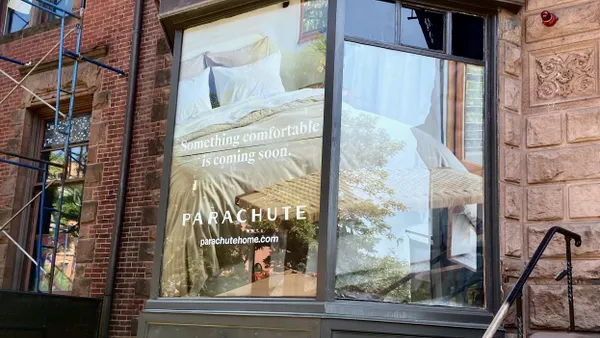Dive Brief:
- Wayfair’s steep losses moderated somewhat in the second quarter, with the retailer reporting a net loss of $46 million compared to $378 million last year and an operating loss of $142 million from $372 million in the year-ago period.
- The retailer’s net revenue fell 3.4% year over year to $3.2 billion, but was up 14.3% from the prior quarter. On a two-year basis, net revenue fell 17.8%. Gross profit was $985 million, or 31.1% of total net revenue, according to a company press release.
- Wayfair’s active customers totaled 21.8 million at the end of the quarter, down 7.6% year over year.
Dive Insight:
Wayfair has begun to see improvement to its bottom line thanks in part to a plan executives introduced last year.
“Last year, we laid out a plan to strengthen our business that included a path to sustainable and growing profitability with several key milestones,” Wayfair co-founder, co-chairman and CEO Niraj Shah said in a statement. “For the past few quarters, you’ve seen us execute against that plan — to lower our costs, focus on the basics and earn more customer and supplier loyalty. And you’ve seen the tangible impact of this plan as our performance has continued to improve.”
And while the shrinking losses is partly due to Wayfair’s cost-cutting initiatives, part of it is also due to “exceptional items” like the $100 million gain on the extinguishment of debt, according to GlobalData Managing Director Neil Saunders.
“When this is factored in, it means Wayfair is still making a $146 million loss at net level and a $142 million loss at operational level,” he said in emailed comments. “Given all the cost saving initiatives that are coming into play, this represents progress, but it is not a victory nor an indication that the group has a sustainable pathway to profitability.”
The investments the company is making into its business come at a time when other retailers in the sector are making investments of their own. Ikea earlier this year announced it would put over $2.2 billion toward fueling its omnichannel growth strategy in the U.S., which includes opening new locations and strengthening its fulfillment network. And earlier this week, Overstock officially rebranded its e-commerce website as Bed Bath & Beyond, with plans to expand the retailer’s assortment to offer furniture and other home product categories like rugs, lighting and decor — positioning it squarely against Wayfair.
The heightened competition in the space, coupled with the waning demand from pandemic highs, means retailers will need to spend more on marketing in order to acquire and retain customers — something that in the past has led to steep losses at Wayfair.
In the second quarter, Wayfair’s advertising spend fell nearly 7% to $352 million, representing 11% of net revenue. From the first quarter, advertising increased 7.6%.
For the third quarter, executives on a call Thursday morning said they anticipate net revenue growth in the mid-single digits, gross margin between 29.5% and 30.5%, and advertising to represent 11.5% to 12.5% of net revenue.
“Our forward view on Wayfair remains gloomy. We acknowledge the work done to reduce costs and streamline the company. But progress, while present, is scant,” Saunders said. “Moreover, the business was so badly run for so many years and has racked up so much debt, that even if progress becomes more substantial it still has a very long climb to get out of the deep financial hole it has dug itself into.”













